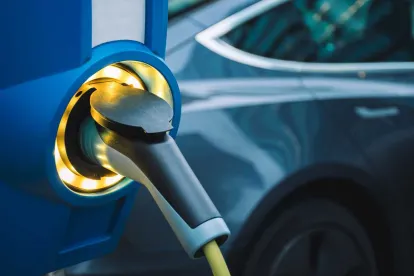On April 12, 2023, U.S. Environmental Protection Agency (EPA) Administrator Michael Regan proposed aggressive new mobile source regulations limiting tailpipe emissions in two separate proposed rules: one targeting light- and medium-duty vehicles and one targeting heavy-duty highway vehicles. If adopted, manufacturers would need to quickly scale up zero-emission vehicle production, including electric vehicle (EV) production, in order to meet the rule’s requirements. The proposed rules would have a significant impact on the entire automotive supply chain as well as on logistics suppliers, and they would expedite the need for aggressive investments in charging stations and the transmission grid nationwide to accommodate the increased demand for EV charging capacity.
The Most Stringent Tailpipe Emissions Limits of in the World
As drafted, the proposed rule for light and medium-duty vehicles would make the United States’ standards the most stringent tailpipe emission limits for automobiles in the world. The proposed heavy-duty rule, follows the Phase 2 greenhouse gas rules for heavy-duty vehicles that EPA issued in 2016. As such, the agency has dubbed the proposed rule for heavy-duty highway vehicles the Phase 3 greenhouse gas rule. The proposed Phase 3 greenhouse gas rule would revise existing model year 2027 requirements contained in Part 1037 to Title 40 of the Code of Federal Regulations, and would set new, more stringent requirements for model years 2028 to 2032.
The proposed rule for light and medium-duty vehicles includes four options for the agency to consider to implement the targeted reductions. These include setting even stricter limits on criteria pollutants and greenhouse gas tailpipe emissions set to phase in with the 2027 model year than those included in the initial proposal; a range of both more and less stringent targets for the 2027 to 2032 model years; and an option that would backload stricter requirements to later in the 2027 to 2032 model year range. The agency is soliciting comment on all of the alternatives proposed. The Phase 3 heavy-duty highway vehicle rule builds on the recent criteria pollutant rules issued for heavy-duty vehicles and would impose stricter greenhouse gas standards for heavy-duty vocational vehicles such as recreational vehicles, emergency vehicles, cement trucks, public utility trucks, buses, and garbage trucks. The Phase 3 proposal for heavy-duty highway vehicles would also establish new emission credit banking requirements for manufacturers to meet CO2 emission limits as well as battery and fuel cell durability monitoring and warranty requirements.
While EPA has drafted both proposed rules to be “technology-neutral” as between using hydrogen or electric vehicles to meet efficiency standards, EPA predicts that if the new rules were implemented, EVs will constitute between 54-60% of all new vehicles sold in the U.S. by 2030, with that figure rising to 64-67% of new car sales by 2032. The objective of the proposed rules is to meet or exceed President Biden’s stated goal of having 50% of new cars sold be EVs by 2030. For comparison, in 2022 only 5.8% of all new U.S. automobiles sold were EVs, meaning, assuming the rules are implemented as proposed and EPA is correct in its predictions, manufacturers will collectively need to meet a ten-fold increase in production to meet the proposed rules’ targets, while phasing out existing higher-emitting families of vehicles.
Implications for Manufacturers and the Automotive Supply Chain
For many traditional automakers, the proposed regulations would require a significant scaling up of capital investments for new battery manufacturing and EV production. In turn, state economic development agencies are likely to compete for the siting of these facilities and their accompanying new jobs and tax base. The implications for suppliers appear more complex. The significant increase in demand for EV components (such as batteries, electric motors, and plastic components) will likely lead to increased competition for rare earth metals, nickel and copper, at a time when proposed new rare earth and copper/nickel mining projects face significant regulatory and political headwinds in the U.S. and with China considering limiting exports of rare earth metals.
Beyond the challenges that vehicle manufacturers will face, providing power for those vehicles will require the installation of a nationwide network of fast EV chargers, supply and fueling systems for hydrogen-powered vehicles, and significant investment in the transmission grid, particularly around larger cities with significant numbers of vehicle commuters. In addition, insurers with exposure to the automotive sector will need to assess the implications of majority-EV and hydrogen-fueled fleets on their policies and rates, owing to the more complicated maintenance requirements for EVs compared to traditional vehicles and the different safety requirements applicable to hydrogen fuel.
Given their far-reaching impacts, the volume of public comments is likely to be significant, and we would expect the final rules to be challenged in federal court. The proposed rules could also be a political issue in 2024 presidential and congressional campaigns. The rules may also be challenged based upon environmental justice grounds, given the currently higher average price of EVs relative to traditional vehicles and limited resale of those vehicles.
Once published in the Federal Register, the proposed rules will be subject to 60-day public comment periods before being finalized.





 />i
/>i
